It’s still crazy to me that Google has made a foldable smartphone and, after using it for the past couple of months, I’m even more surprised that the Google Pixel Fold is as good as it is.
Our review of Google Pixel Fold was initially published on June 26, 2023, and has been updated as of September 8 to reflect two further months of use.
Hardware & Displays
Google’s first foldable is very well-built
One of the biggest things Google is touting on the Pixel Fold is the build quality. I was skeptical of this at first given the company’s history but, really, they’ve mostly nailed it. The aluminum frame of the phone feels good, though it is an absolute fingerprint magnet in the black variant Google sent out. This has largely led to me using a case over my past couple of months using the device, because often, the frame can feel almost sticky in humid weather.
The unfolded hardware is also incredibly thin, more so than the Galaxy Z Fold 4 I’m used to using, and even an improvement over other devices I’ve tried (even ones sold outside of the US).
This is also the first Pixel device since the Pixel 4 series (RIP) to have a matte back. The rear glass is soft to the touch and, while not quite to the same level as past Pixels, is quite good. I was disappointed to see some regulatory markings on the back, something that Pixels are usually free of, but it’s easy to forgive with the really nice hand feel that comes from the combination of matte glass and glossy aluminum. It’s something that no other modern Pixel offers.

And, on top of that, there’s the size. The Pixel Fold is unexpectedly compact. I’ll talk more about using the 5.8-inch display later on, but the phone’s overall size is just a delight, at least when it’s closed.
Each time I pick up the Pixel Fold, I fall a little more in love with the hardware and build quality.
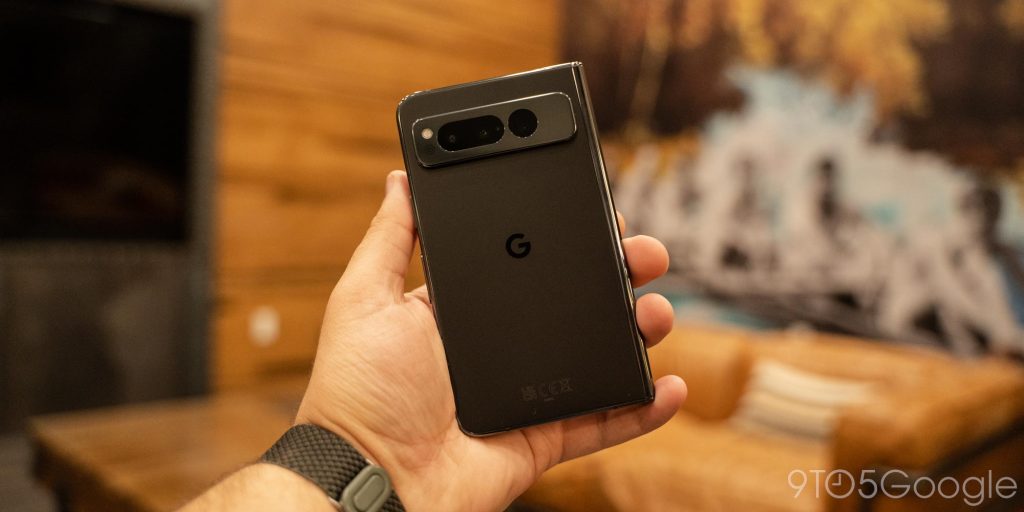
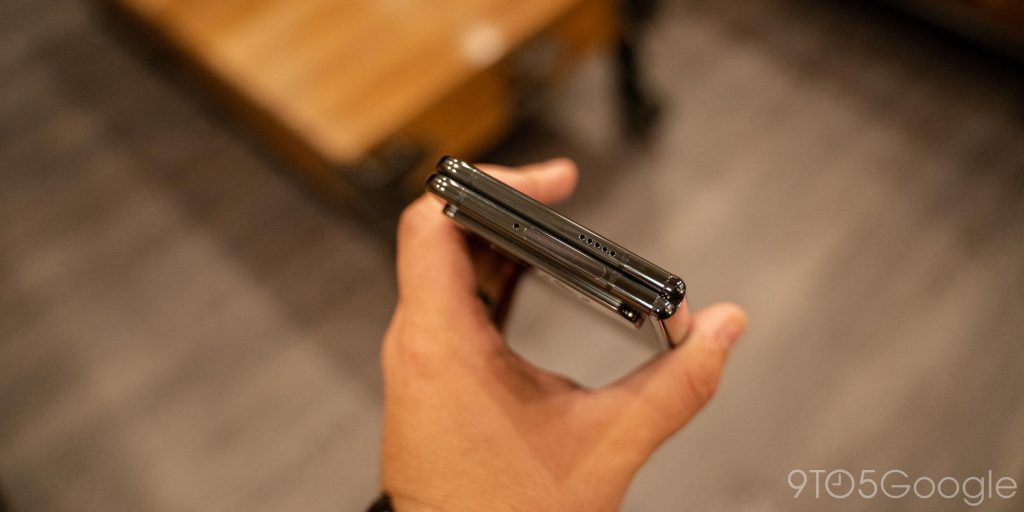
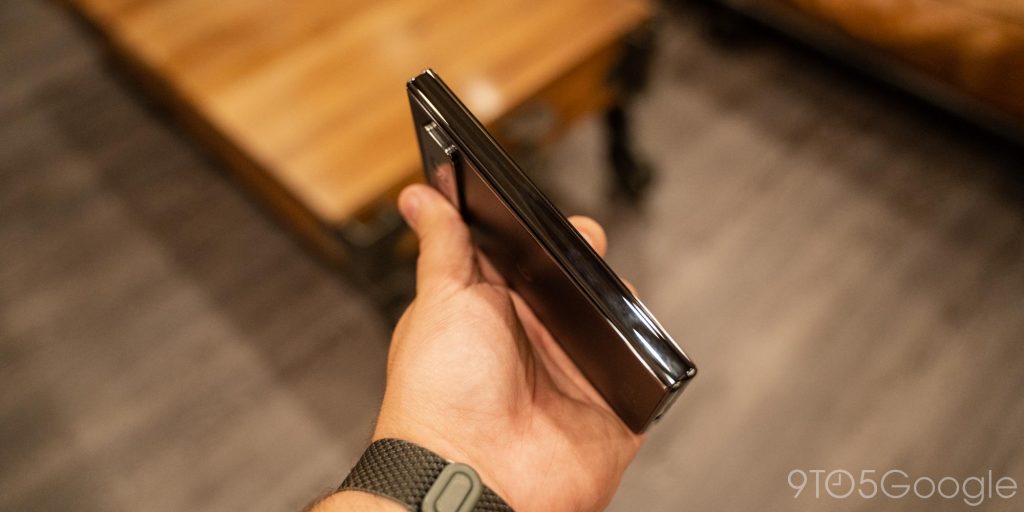

Of course, that’s not to say it’s perfect. The Pixel Fold is very heavy, weighing in at a whopping 283 g – that’s 20% heavier than the Pixel 7, and you feel it. That said, as someone who’s carried a Galaxy Z Fold for the past few years, I don’t really mind it, especially because Google’s foldable is thin. Keeping the Fold in my pocket really didn’t feel all that different from the Pixel 7 Pro in a case, even when the Fold was in its official case. The weight is a “problem” when you first pick up the Fold, but it becomes a non-issue after even just a few hours of use.
A couple of months later, that opinion hasn’t changed. The Fold is heavy, but that’s not inherently bad.
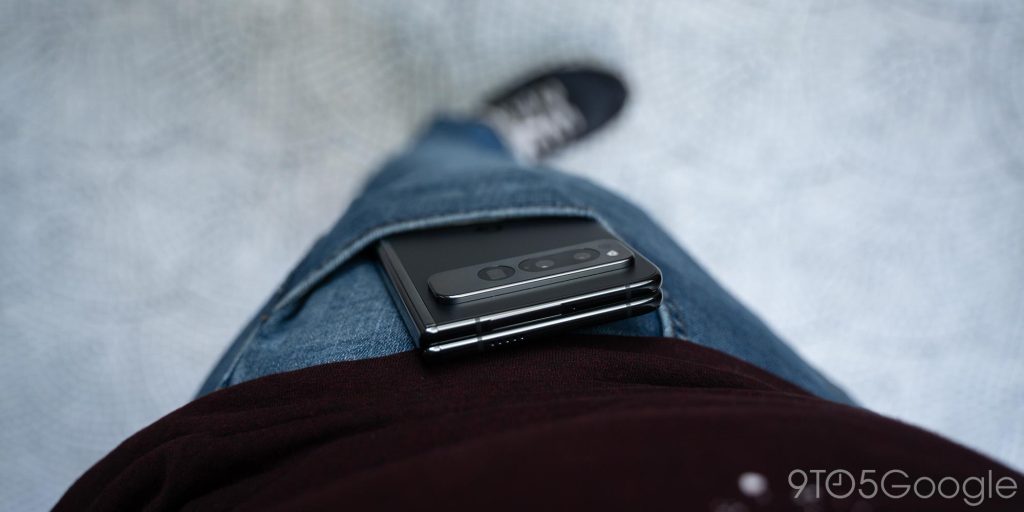
Another non-issue, at least to me, is the hinge. The stiff hinge which uses stainless steel to improve the durability is well-built as I mentioned, but it doesn’t always reach 180 degrees when you initially open it up. Rather, you have to exert some extra pressure to make it completely flat. This seems to be a lottery, with some Pixel Fold units being better or worse than others. My unit, at least, seems to be well-tuned. During my first couple of weeks, I was typically seeing the device settle around 179 degrees when open, and I’ve gotten into a habit of just giving it a little extra push to hit 180 degrees.
A couple of months in, that stiffness hasn’t really improved. In fact, the hinge only feels tighter now, with more pressure needed to get that full 180, and even then, it doesn’t hold as long anymore.
Hinge tolerance is a problem that all foldables face. The Motorola Razr+ I just finished reviewing last week often settled around 178 degrees without an extra push, and a few months into using my Galaxy Z Fold 4, it’s hard to get a completely flat unfolding. The Pixel Fold certainly isn’t alone here, and according to Google, the resistance you feel during those last couple of degrees is actually a side effect of just how strong the hinge is. The company is insistent that the hinge can hit 180-degrees and, yes, that’s true.
I will add, though, that after using the Galaxy Z Fold 5 in July for our review, I was reminded how far behind Google is here, and just how good Samsung’s hinge really is.
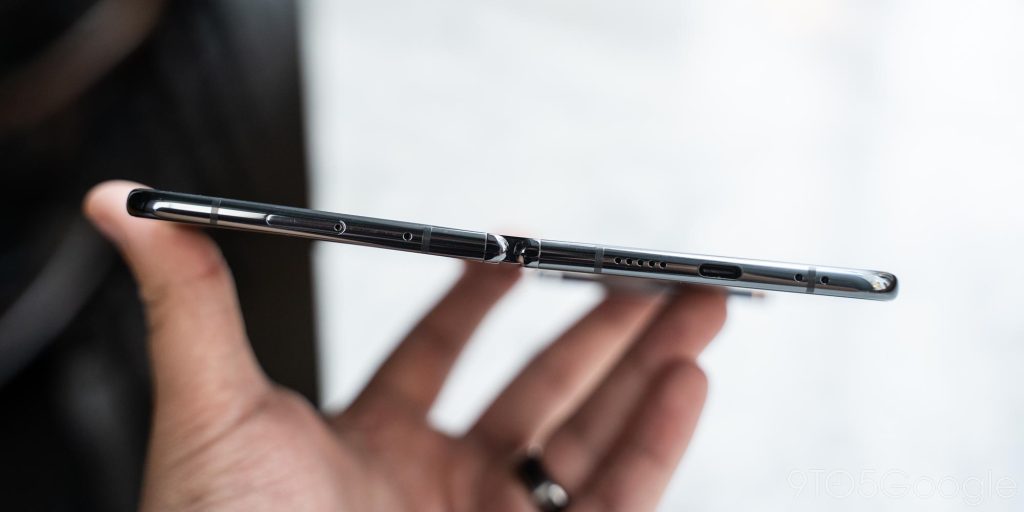
Both displays have their pros and cons
On the outside of the Pixel Fold is a 5.8-inch display, backed up by a 7.6-inch panel on the inside. First, let’s talk about the outer display, because it might be the secret weapon of this device.
The Fold’s outer display is compact in a way we haven’t felt on a modern Pixel phone, and it’s also wide compared to most foldables I’ve tried. Through four generations, Samsung’s Galaxy Z Fold series has stuck with a tall and super-narrow display that a lot of people really dislike. I am not one of those people, and have really come to love the feel of that display. That said, the Pixel Fold kind of nails it here. The outer display is super wide (roughly identical to Pixel 7 Pro, but vertically much shorter), which I thought would feel cumbersome, but the phone’s super-thin design helps make that okay.
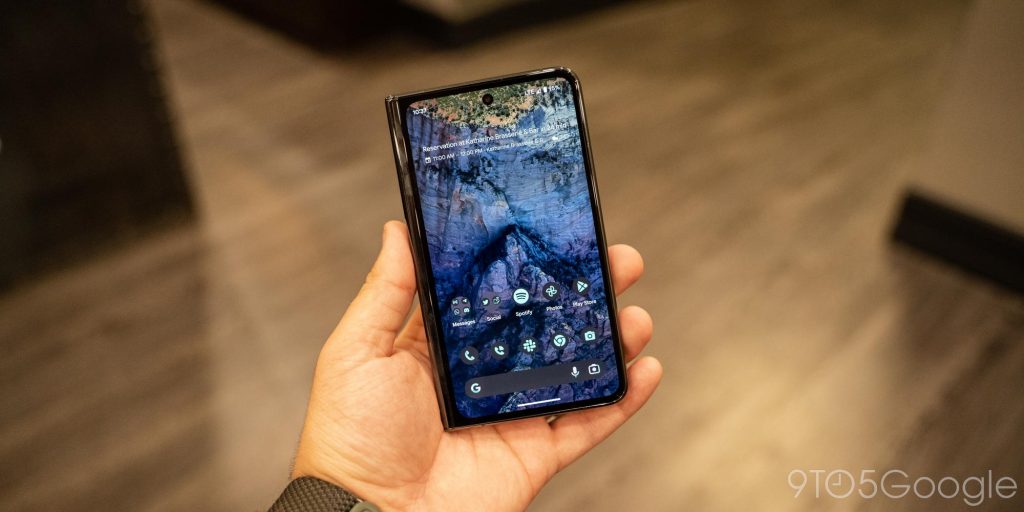
In action, that small display is quite nice to use. Despite being more than a full inch smaller than what I’ve gotten used to on the Pixel 7 Pro, I don’t really feel like I’m giving anything up. And, in terms of usable area, it’s much better than Samsung’s option. Plus, the glass is flat!
During my first week or two on the Pixel Fold, I felt the outer display was a little dim, but extended use has pretty much cemented this display as perfectly acceptable. It’s a pleasure to use, and more than bright enough even for bright and sunny days.
The wide outer display also leads to a wide inner display. The 7.6-inch panel here is the same diagonal measurement as Samsung’s foldable, but it feels much larger due to its width. And this comes with its own set of pros and cons.
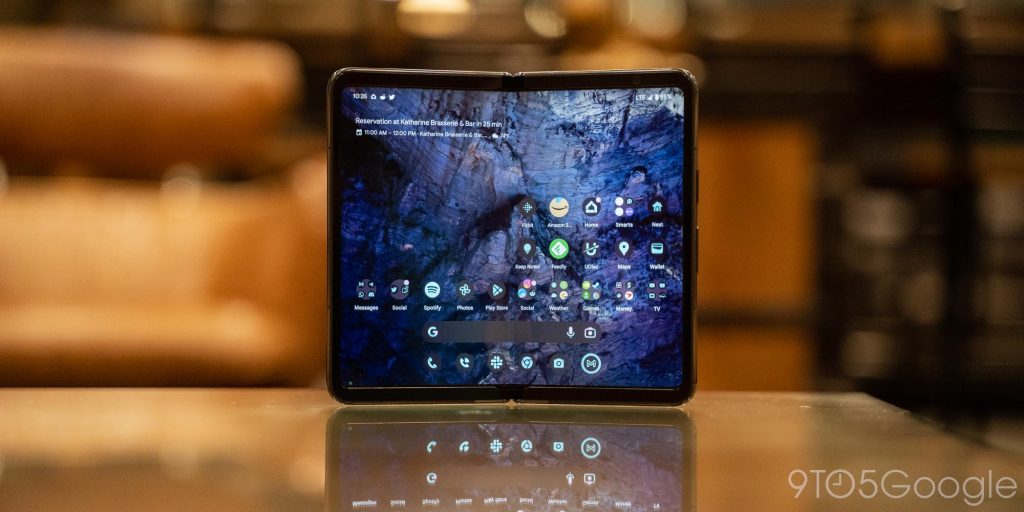
On the bright side, there’s a lot of room here. Tablet-optimized apps feel right at home, and we’ll get into some examples later on.
This size and aspect ratio are also really good for running two apps side by side, making the Fold a multitasking machine if you want it to be and without any real compromise. The two apps essentially have full, albeit short, smartphone displays to themselves.
To address the bezel, this is beyond a non-issue.
The Pixel Fold’s bezels are a good thing. They provide extra room for grip, both on the sides and the top/bottom, as well as allowing for a good-quality inner camera that doesn’t take away from the screen in any way. If you have an issue with the bezels, just don’t buy the phone – anyone who actually gives it a chance will tell you the bezels do not matter at all.
What does matter is how the screen feels and, yes, the crease.

The screen here is using a layer of ultra-thin glass coated with a built-in screen protector – Google says that screen protector should not be removed. The screen feels alright most of the time, but I did notice that humid conditions leave it feeling a little sticky like early generations of Samsung’s foldables. It’s certainly far better than those devices in that regard, but it’s not quite up to par with most other recent foldables I’ve tried.
And, as for the crease, it’s totally fine. It’s not nearly as good as foldables from Oppo, Xiaomi, Honor, or even Motorola, but if those brands are the gold standard and Samsung is the bottom of the barrel, I’d put Google as the middle ground. You’ll feel the crease and sometimes see it, but in actual use, it becomes a complete non-issue.
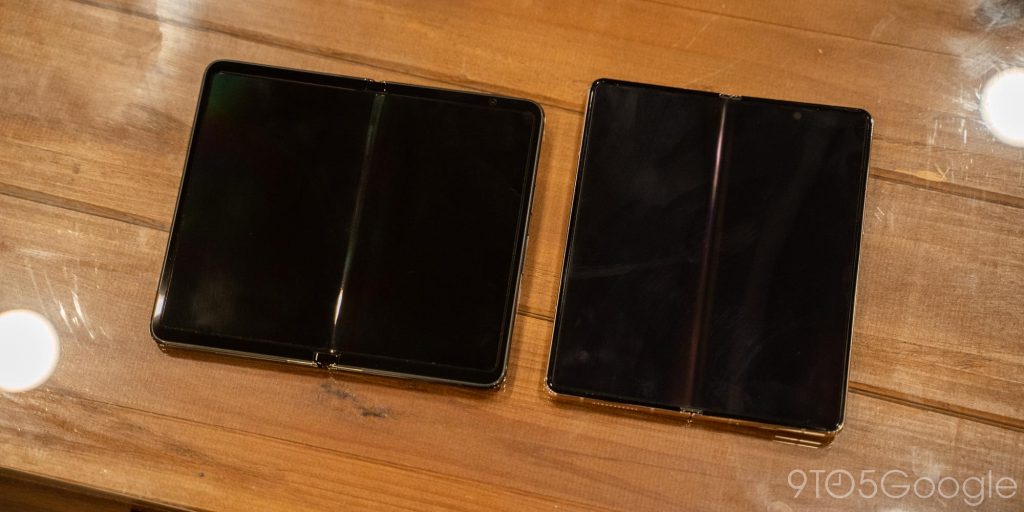
Really, what’s been most frustrating to me in continued use of the Google Pixel Fold is how readily it picks up dust. I feel like I’m constantly cleaning this screen, and cleaning also doesn’t feel as effective as it should because the gap between the screen protector and the frame holds bits and pieces in between. I use a little cleaning brush to help, but it’s still frustrating.
The Pixel Fold is too wide
My biggest problem with the Pixel Fold so far is that this phone is wide.
The open 7.6-inch display leaves a ton of room for activities as mentioned, but it’s cumbersome to use. The width makes it harder to hold the foldable with one hand when it’s open, and even when it’s closed, the small screen isn’t fully one-hand-able because it’s so wide. The width also leads to excessive wasted space inside when an app is forced into portrait mode.
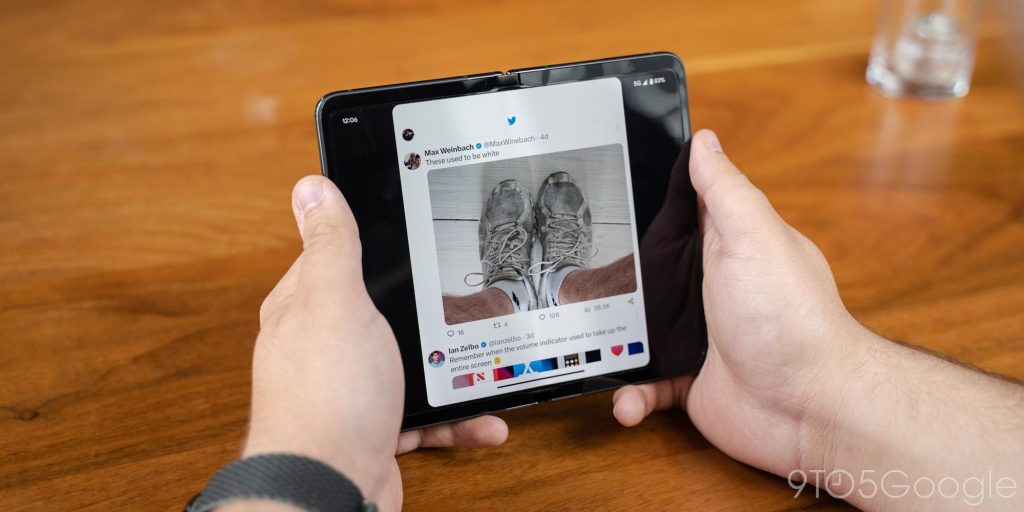
But the real kicker is typing. Gboard defaults to a split view on the Pixel Fold, which I usually hate, but here that’s pretty much a necessity, like on the Pixel Tablet, because using the regular layout on the inner display requires either insanely long thumbs or some serious hand gymnastics. Even a few days in, I’m still not very happy with typing on the inner display as it’s uncomfortable and leads to constant typos.
And, even after two months, I’m still of the opinion that Pixel Fold is too wide. However, I have settled into the form factor a little more. Typing feels easier and more comfortable. I’ve learned my workflow in certain apps. There are still a lot of frustrations with the width, but it’s less of a problem than I thought in my initial few days.
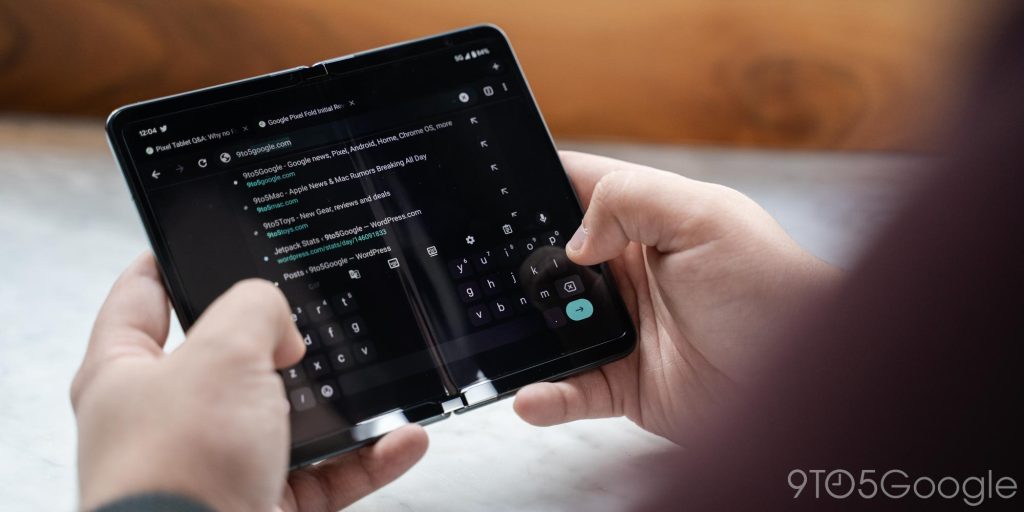
Software & Performance
Google’s take on a foldable is clean, but not as capable
With the Pixel Fold being a multitasking-centric device, I was actually a little mixed about the Pixel experience being at the helm. As much as I love Pixel software, One UI feels like a perfect fit for this form factor. That said, Google’s experience actually holds up rather well, and there’s not much I felt myself missing from my Galaxy Z Fold 4.
The biggest advantage Google’s software has is that it’s clean. The Pixel experience is full of useful features, but they’re designed in a way that never feels cluttered. Buttons are more clearly labeled, information isn’t quite as dense (though not much space is wasted).
A good example of that is the notification tray. Where Samsung gives you one big column, Google takes advantage of the extra space by showing one panel with your quick settings to the left and one with notifications to the right. Admittedly, I’d have loved to see some more quick settings to fill the vertical space, but aesthetically, this is pretty well-balanced.
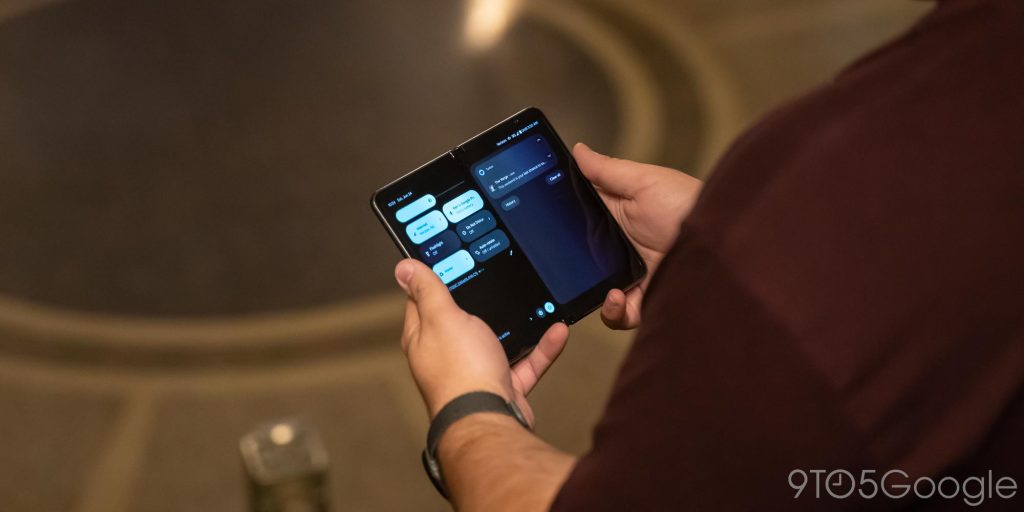
Google’s take on foldable software is also one where both screens contribute to the same experience. The Pixel Launcher displays the same layout inside and out, just with the inner display showing two panels at once. Google explained that this choice was made because it feels more convenient and fluid, but it’s something that the company will evaluate again in the future. The only problem I felt there was with the app dock, which has an extra slot on the inner display that you don’t get on the outside.
You’ll also feel this cohesive setup through apps. Obviously, using an app on the outside leads to that app just getting bigger when you open the display, but if you’re using an app on the inner display and then close the phone, the outer display will keep that app alive too. Where Samsung brings you back to the homescreen, Google will show the same app on the outside that you were just using on the inside. If you were multitasking on the inside, the last-used app appears on the outside. That also, oddly, leads to app pairs not sticking around on the inner display, but that’s ultimately a pretty minor annoyance.
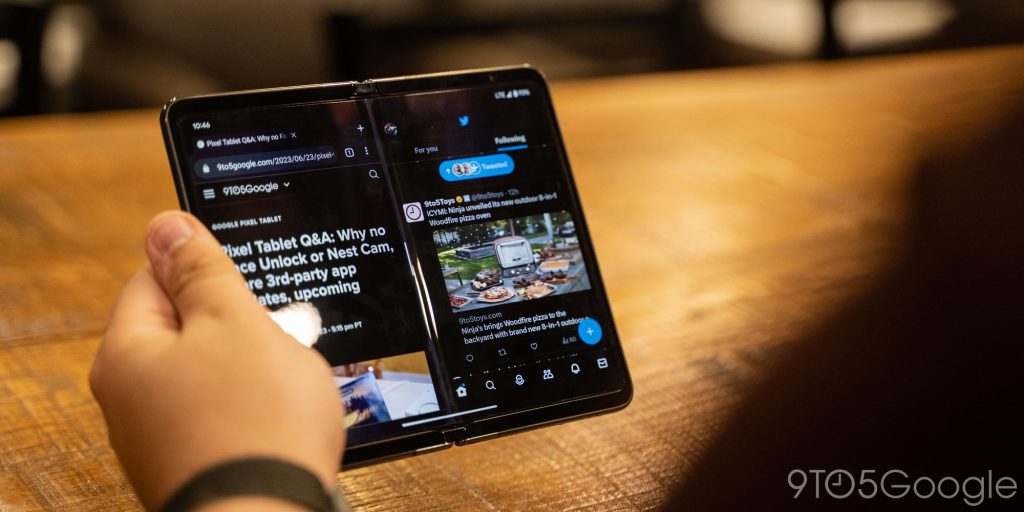
Multitasking in itself is a feature that, personally, I actually rarely find myself using. I generally tend to use the foldable display as just a bigger space for my singular apps, but using two apps side-by-side does feel really nice on this display, and the taskbar makes adding apps easy. The feature I really found myself missing, though, was Samsung’s floating apps. Google doesn’t offer this, and I really would have appreciated the option on this expansive display. That said, just making the secondary app smaller had roughly the same effect.
The Google Pixel Fold runs Android 13 out of the box, with the usual update policy of three years of major Android updates (through Android 16 at least) and five years of monthly security updates. That’s behind Samsung’s 4-year promise for major updates, but it’s not really all that bad either.
The app situation is getting better
As usual with any big-screen Android device, the Pixel Fold faces the app problem. Android apps, in large part, just aren’t good at being on tablets, but this situation is very clearly getting better.
Some star pupils during my use of the Fold so far have been the Google Home app, the new Google Weather app, and Google Keep.
Notice the lack of third-party apps here? There are some good ones, like Telegram, WhatsApp, and Discord, but there are many that are slacking here. Twitter, Reddit, and others are letterboxed in, and other apps that once had a tablet layout, like Slack, just don’t work well.
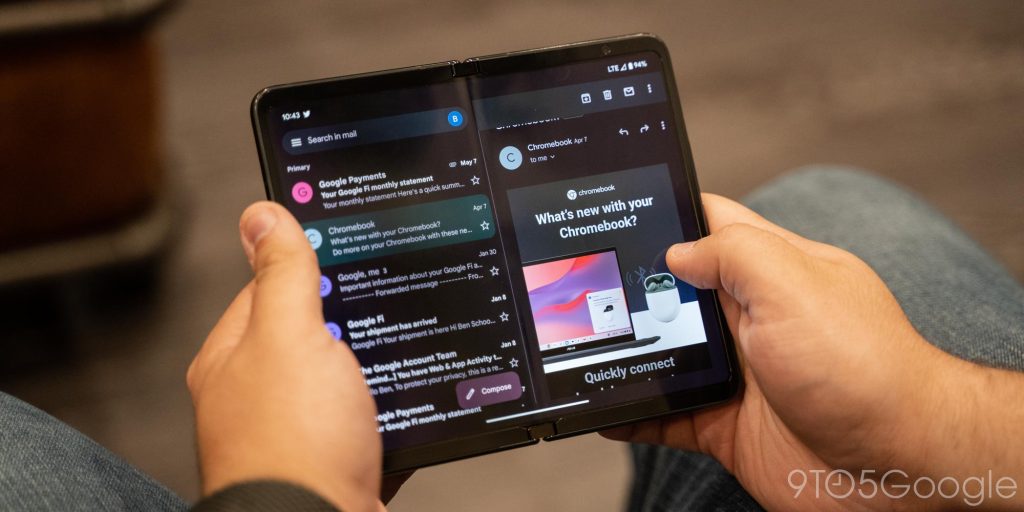
But ultimately that’s not the fault of the phone and, if anything, the Pixel Fold’s existence may help us towards a future where these apps are a little better. And Google has struck a good balance, too. While I firmly believe that Samsung’s taller and narrower aspect ratio is better for most apps today, I ran into fewer problems on the Pixel Fold because Google forces apps to run in the correct aspect ratio, even if they have to be letterboxed.
Things would be slightly better if the Pixel Fold wasn’t so wide, though, something I predicted might be the case.
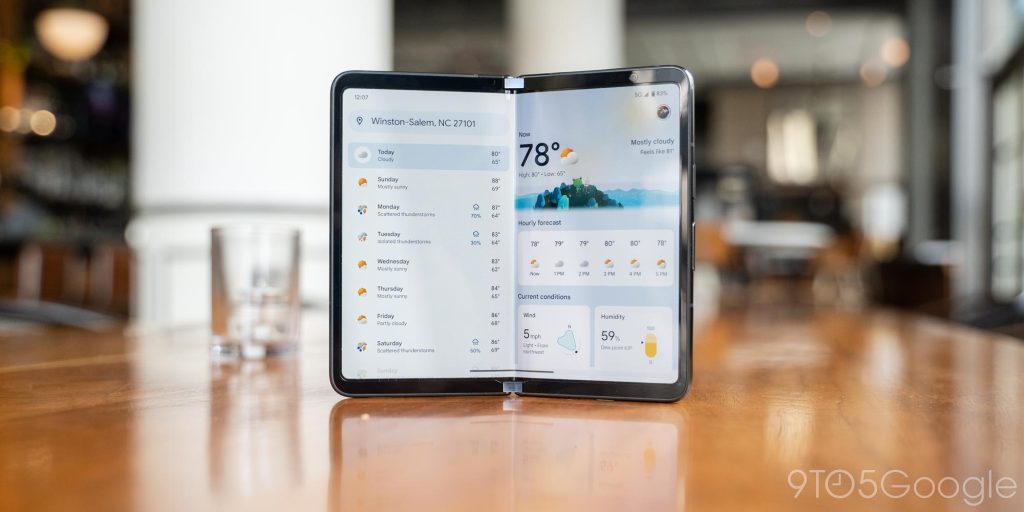
Tensor G2 is fast enough but is the Fold’s weakest link
As has been the case with Google’s past few Pixel products, much of the conversation with performance comes down to Tensor. The Tensor G2 processor here is the same one found in Google’s Pixel 7 and Pixel 7 Pro, which means it’s faster than its predecessor, has a better modem, and overall, just gets the job done. Sure, the Snapdragon 8 Gen 2 is much faster, but you’re really splitting hairs to feel that difference.
Rather, the reason I’d prefer a Snapdragon here just comes down to efficiency. With Google mainly releasing Pixels in the late fall, I rarely get to experience how the phones handle heat during my review period. But between daily driving a Pixel 7 Pro through the first 85-degree days of the year and now using the Pixel Fold as North Carolina’s temperatures jump up and down, I’m reminded of just how Tensor fails here.

The Pixel Fold gets hot often and stays warm almost constantly. Just using the foldable for more than 15 minutes at a time leaves the bottom half feeling a bit warm, and escalating that with a game or something more intensive can just make matters worse. The heat is also somewhat more noticeable on the Fold versus the rest of the Pixel series just because of how thin the device is.
Is this a deal breaker? For many people, it might just be, and that would be fully understandable. For me, I don’t really run into actual issues caused by Tensor’s heat enough for it to be a problem – it’s mostly a minor inconvenience. But with the Pixel Fold costing double Google’s other most expensive phone and really, sitting at the top of the charts for the foldable market as a whole, the standards are higher, and Tensor really proves to be this phone’s weakest link by far.
Two months later, too, this hasn’t gotten any better. On so many occasions Tensor has gotten extraordinarily warm. I distinctly remember one evening where I was just using the inner screen to read, and Tensor heated to the point where the Fold literally become uncomfortable to hold. That’s a problem!
Cameras
This is where Google Pixel Fold shines
Due to the inherent limitations of foldable form factors, these devices have historically struggled in the camera department. Even with the Galaxy Z Fold 4, Samsung still doesn’t really nail it here, and other brands are hit or miss – Oppo, Xiaomi, and Honor seem to have really figured it out, though.
Google, thankfully, seems to have kept up the Pixel’s camera legacy on the Pixel Fold. With my most of review period being stuck in dark and dreary conditions, I don’t want to solidify my thoughts on the camera just yet. But, at least so far, it seems like a winner.
The 48MP main camera doesn’t feel quite as strong as the 50MP sensor in the Pixel 7 and Pro, but the 5x telephoto lens is a godsend compared to my Galaxy Z Fold 4’s 3x lens, and I’ve been very happy with a lot of my shots so far.
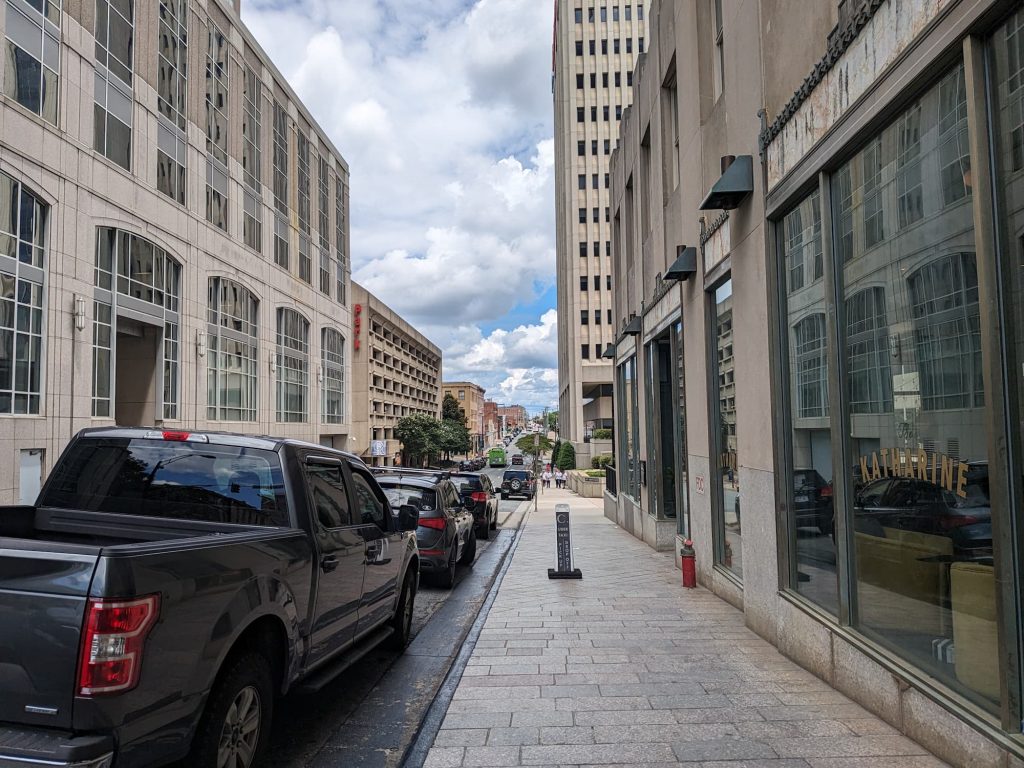
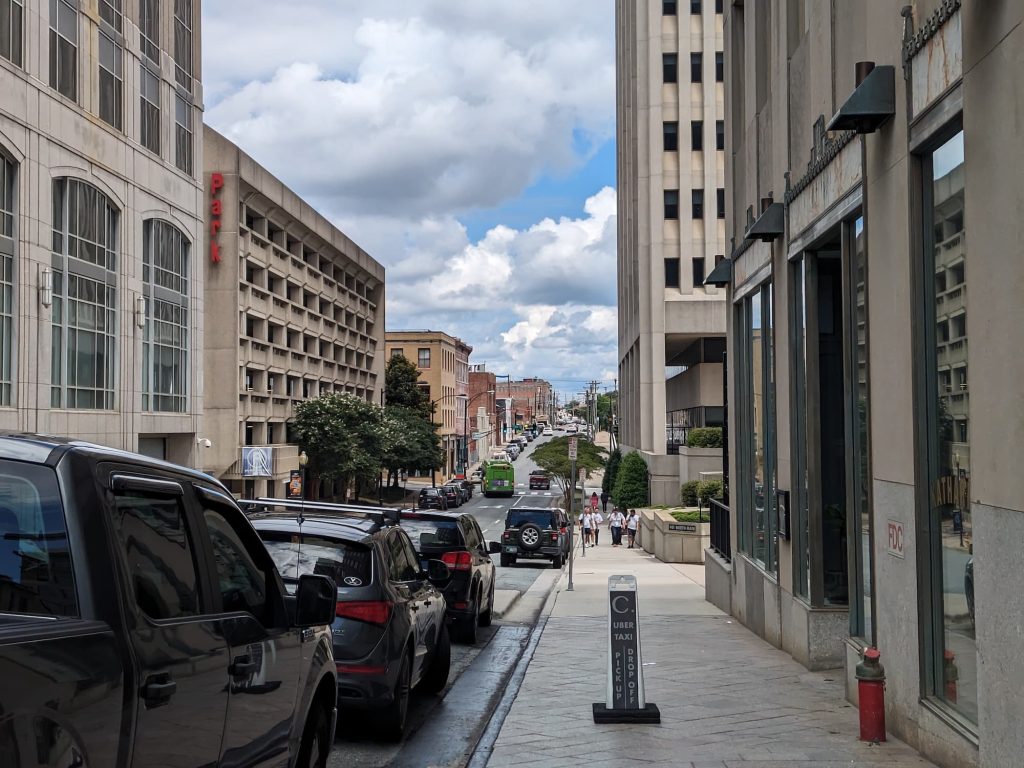
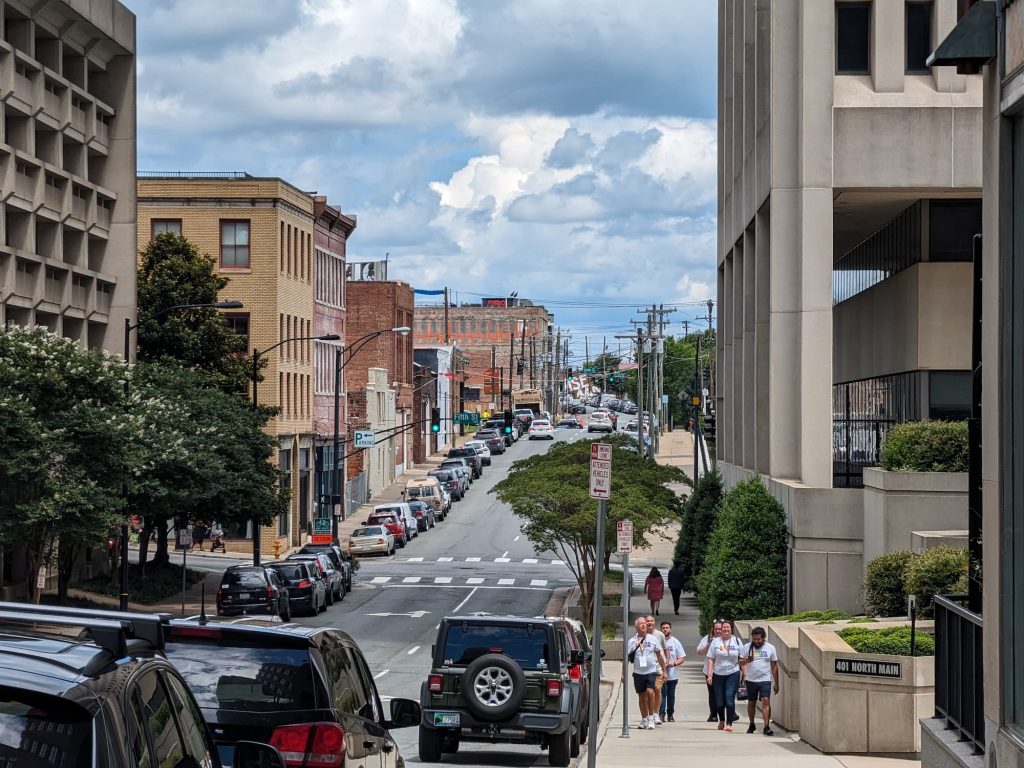
One of the perks you’ll get on the Google Pixel Fold is the ability to shoot selfies with the rear camera by using the outer display as a viewfinder, and the Google Camera app adopts to this well. I think Google’s implementation of the button for switching to this mode is much more obvious than on other foldables, but the width of the Pixel Fold makes holding it and snapping the shot a little cumbersome, and skin smoothing felt very aggressive. I’m not much of a selfie taker, but I don’t remember past Pixels being quite as strong here.
Still, I’m far happier here than I’ve been on the Galaxy Z Fold 4 that’s usually in my pocket, so this is a big win in my book. And, despite some minor improvement on the Fold 5 that’s been released in the time since our initial review, the Pixel Fold’s camera still stands out as the reason to go with this device.
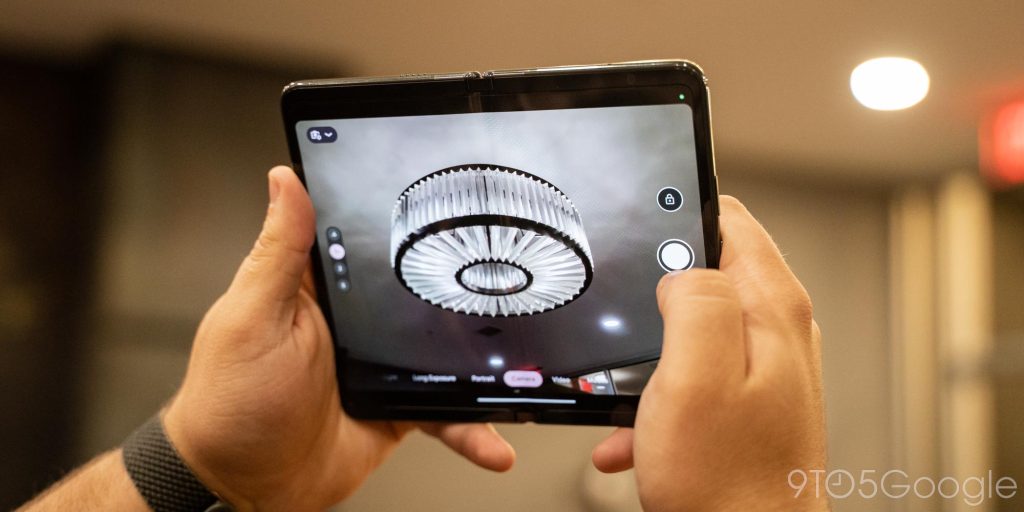
Battery Life
Maybe the best battery on a Tensor-powered Pixel?
In the few days I’ve been using the Pixel Fold so far, I’ve actually been really happy with the battery life.
I’ve been running roughly a 60/40 split on the outer and inner displays respectively, and have been managing 3-4 hours of screen time daily with a mix of social media, email, web browsing, the occasional game mixed in. Wireless Android Auto is also a fairly regular occurrence. The endurance isn’t perfect by any means, but for my usual 8 a.m.- 11 p.m. schedule, I find myself going to bed when the tank has hit the single digits.
If I know I’m going to be out later, or really out at all given Tensor’s inefficiency on mobile networks, I usually try to find a few minutes to plug in for a bit of extra juice. The wired charging, which hits around 22 W like the Pixel 7 series for the 4,821 mAh battery, is generally enough, too. Wireless charging, though, has been quite finicky even on Google’s own Pixel Stand. I suspect it’s just because this phone is so much smaller in its vertical footprint, as a pad-style wireless charger does work much better.
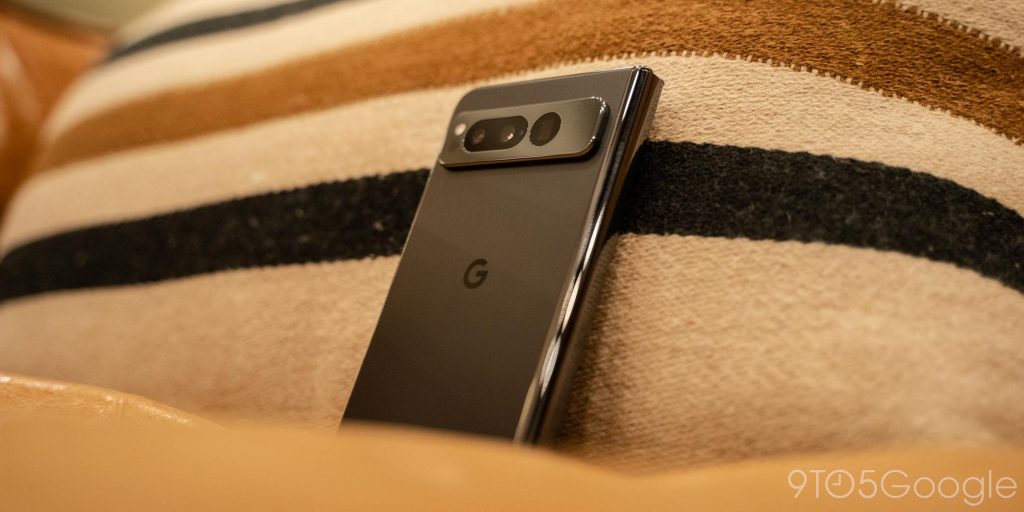
Repairability
With any foldable repairability is an important point to consider before buying, and that’s especially true with one from Google, given the infamous history of woes with Pixel customer service.
For the Pixel Fold, Google tells us that mail-in and walk-in services are available for repairs out-of-warranty. Preferred Care is also available for wider coverage up to repairs and replacements. Google is even going to offer DIY repair parts.
I personally doubt that Google’s service will remotely match that of Samsung, and even Samsung’s options for foldables have been lacking. But, as with every other pricey foldable, I can only recommend you buy this if you buy an insurance plan, and/or have a backup device for if something goes wrong. Foldables are a lot stronger than people give them credit for, but with this being a first-generation foldables, and especially one from Google, having a backup plan will be important.
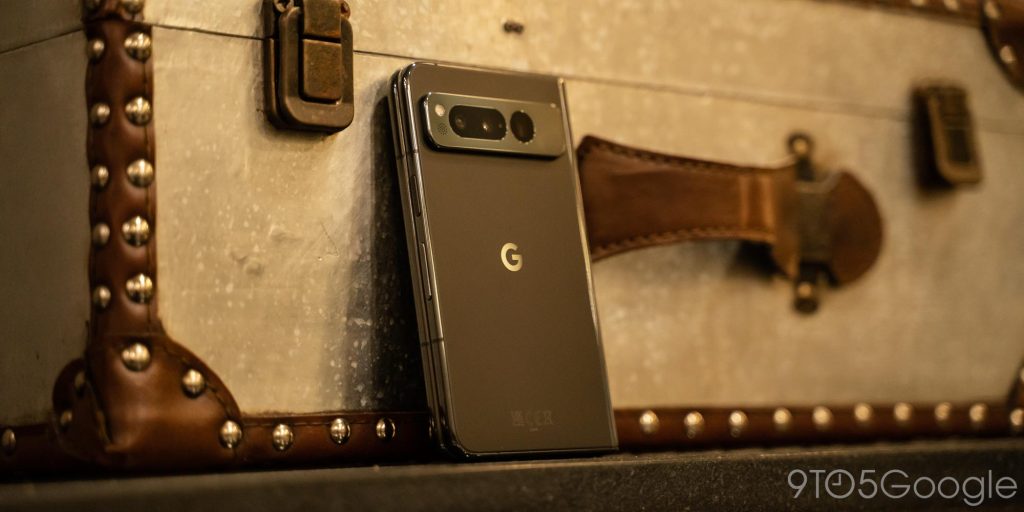
Tidbits
Haptics
Haptics feel less impactful on the Pixel Fold than they do on the Pixel 7 and Pixel 7 Pro. That’s not to say they’re bad, they’re still so much better than most phones, I just find myself noticing them less because they’re not as strong.
Fingerprint sensor
Unlike every other Tensor-powered Pixel phone so far, the Pixel Fold has a physical, capacitive fingerprint sensor. The sensor is built into the power button and, generally speaking, is very good. The success rate feels higher than the optical sensor found in Pixel 7 Pro, and if it does miss on the first try, it always gets it the second time around. I think this will get better with time as I get used to the placement.
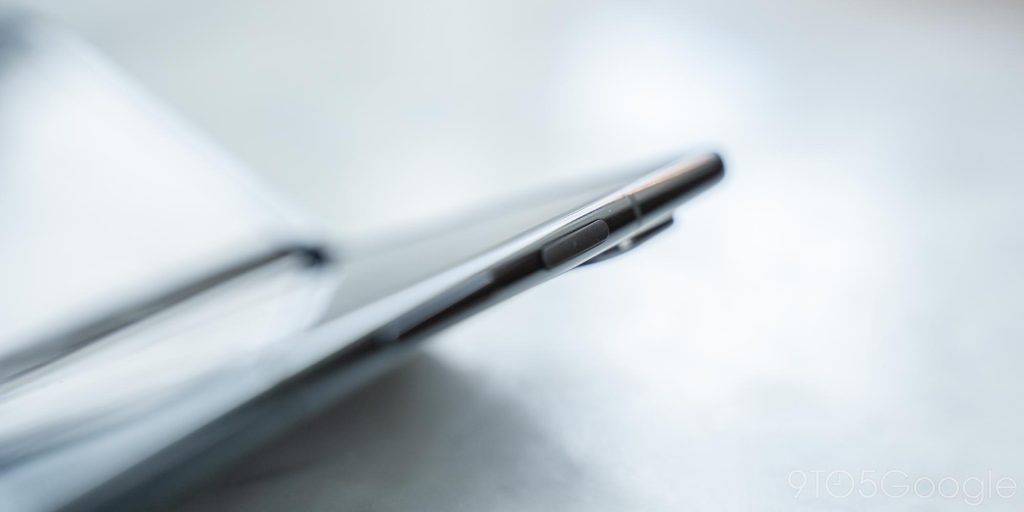
Official case
If you’ve followed my time with Samsung’s foldables, you’ll know that cases are something I’ve felt foldables haven’t really nailed down. Samsung took about three years to really figure it out, but Google nailed it here right out of the gate. The official Pixel Fold case, which runs $60, fits onto the foldable well and uses minimal adhesive to do so. There are a couple of adhesive bits, but they don’t prevent easy removal. The case fits snugly, especially on the front, and the back half is super grippy. Overall, this case is a huge win and certainly worth adding to your purchase.
Though, I will say, continued use of this case has slightly lessened my opinion of it. The case still fits like a dream and is comfortable to use, but hot and humid conditions leave that grippy back as a sore point when you put the Fold in a pocket. I’ve mostly moved over to a faux leather case (not Bellroy’s awful option) for day-to-day use.
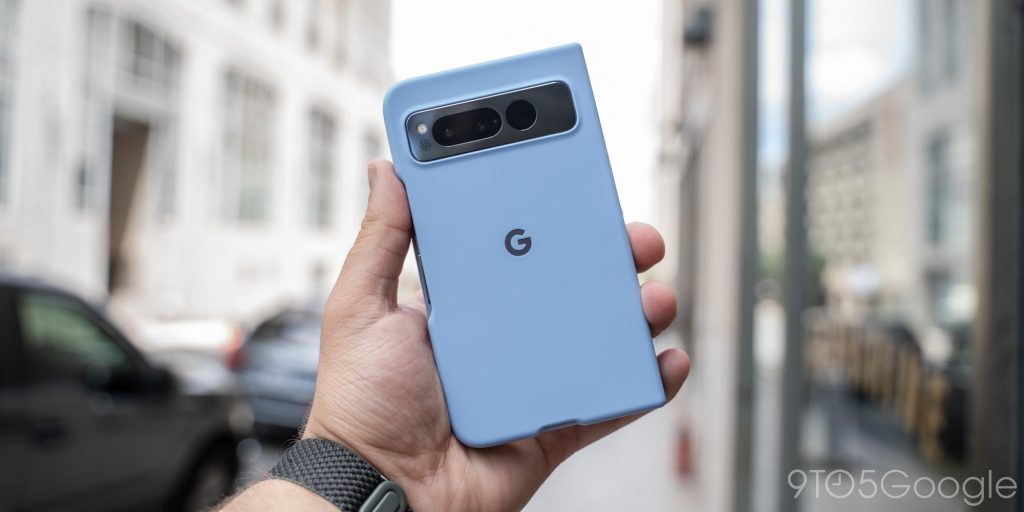
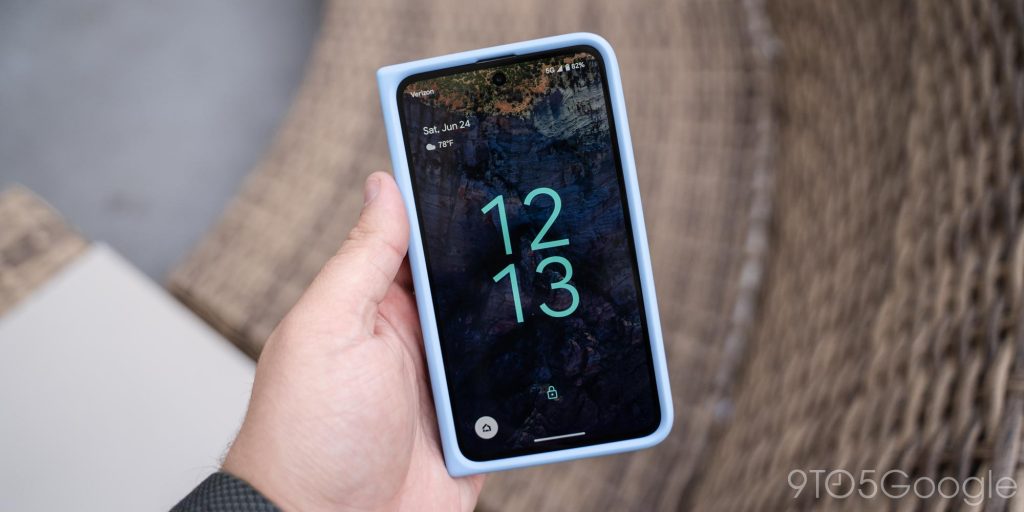
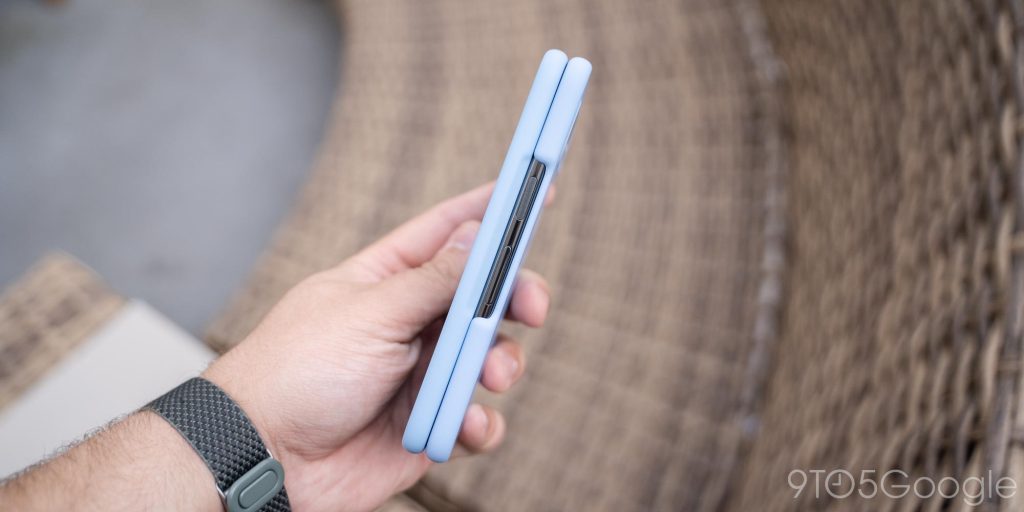
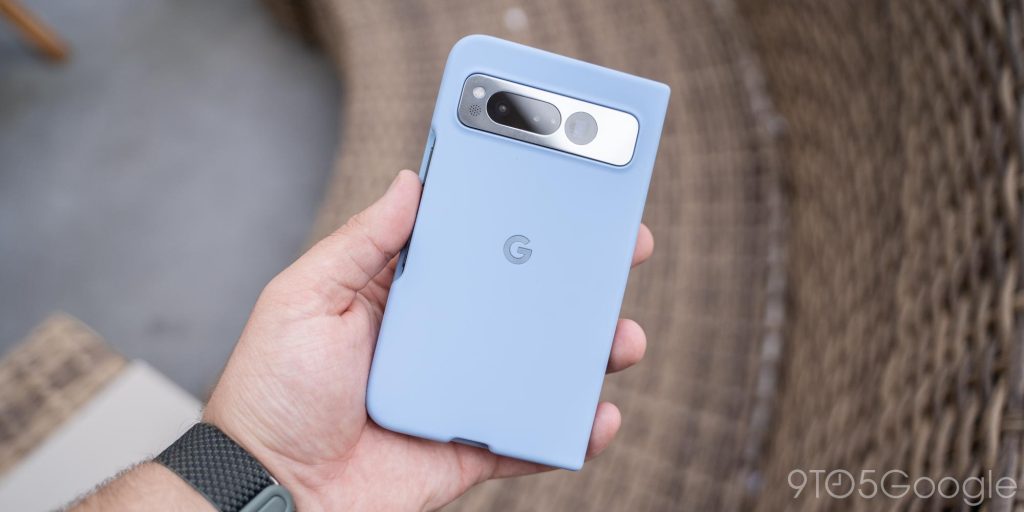

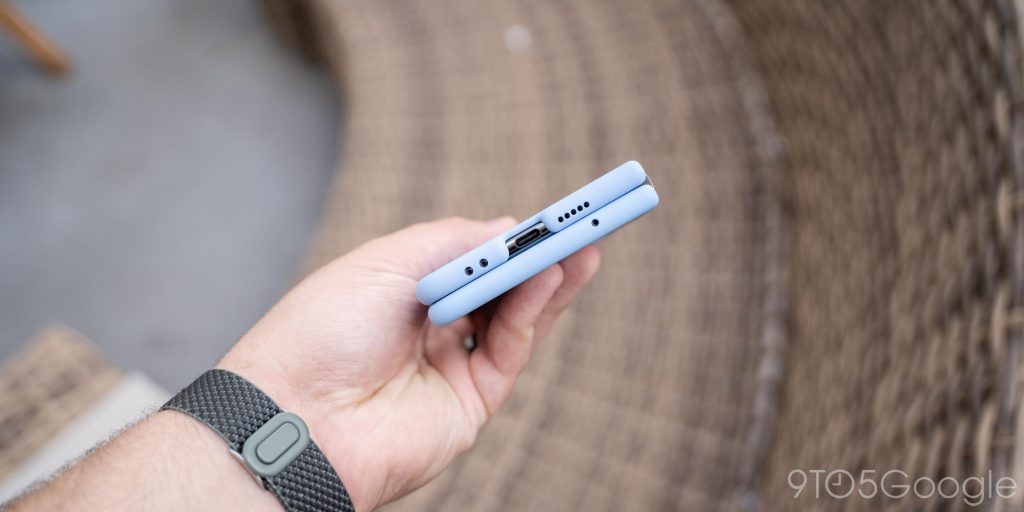

The verdict
Over the course of two months with the Google Pixel Fold, I’ve come to really love this device.
On a hardware level, it’s far from perfect. The hinge is fine, but not really as good as Samsung’s. The inner screen may be too wide, but it lets Android apps flex their tablet interfaces, and we’ve seen far worse before. And, in terms of the camera, Google is offering the best experience on a book foldable in the US, and arguably in general too. Competition from Xiaomi, Oppo, and others also have great cameras, but no one really matches Google’s reliable experience for stills.
For a first-generation product, I’m blown away at just how good the Pixel Fold has proven itself to be. It’s so much better than it should be.
That said, I don’t think the Pixel Fold is remotely worth its $1,799 asking price.
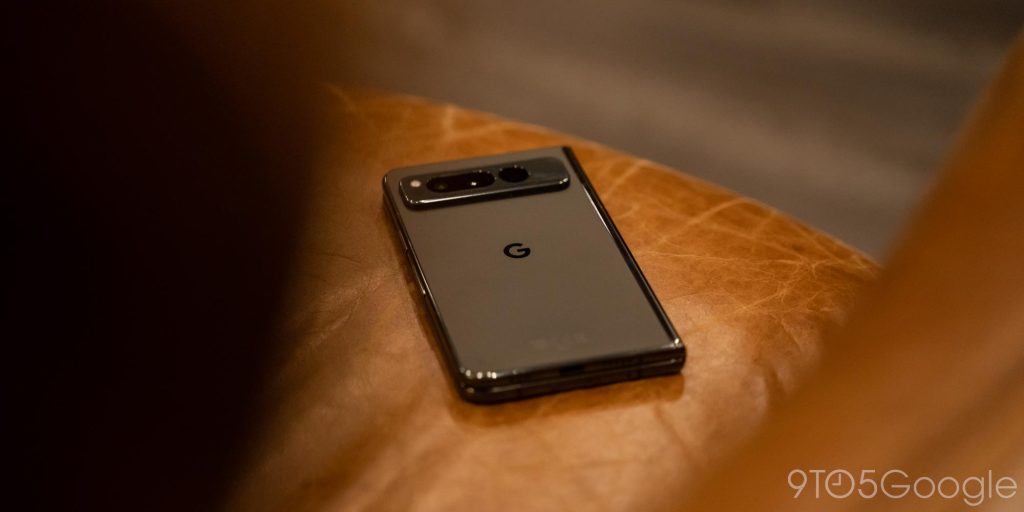
Google’s Pixel series since the Tensor reboot has been genuinely good in a lot of ways. Google’s phones have a distinct voice, and good choices throughout their design, software, and spectacular cameras. But the pitch only works if they’re cheaper than the competition.
Tensor, really, is a shortcoming big enough that it requires Google to be selling its experience at a lower cost. With the Pixel Fold, that’s just not happening. Arguably, the Pixel Fold is more expensive than the Galaxy Z Fold 5 because Samsung’s trade-in offers are so much better.
When we first heard that Google was making a foldable, I was eager to buy one for myself. Finally, a foldable that gives me the form factor I want combined with the cameras I can’t give up. But, really, I’d rather spend my money on the polished hardware that Samsung provides than what Google has here, even if that means compromising on the camera.
But, that said, this first Pixel Fold is a very solid foundation. When inevitable improvements to Tensor and a price cut finally arrive, they’ll make future Pixel Folds a much better sell. In the meantime, this is product that I can’t actively recommend to most people, but I do know that those who try it will probably still love it.
Where to buy Google Pixel Fold
FTC: We use income earning auto affiliate links. More.










